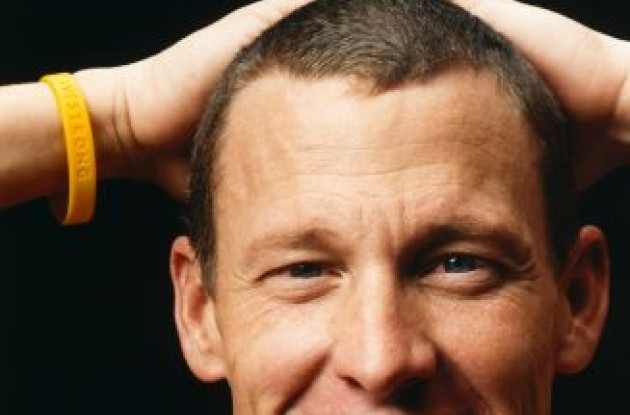LANCE: The Making of the World's Greatest Champion
Introduction to and an excerpt from the new book LANCE: The Making of the World's Greatest Champion by John Wilcockson.
No champion has astonished the world quite like Lance Armstrong. A cancer survivor who went on to win the Tour de France an unprecedented seven times, he is an inspiration to millions. Yet few know the complete story of this brash, smart, and fiercely competitive Texan who battled to the top of his sport, overcame the most rampant case of testicular cancer doctors had seen, and then conquered cycling’s Holy Grail time after time. In Lance: The Making of the World’s Greatest Champion, John Wilcockson draws on dozens of interviews with those who know him best to trace Armstrong’s remarkable, yet controversial journey in vivid detail.
Family members—including his adoptive father speaking publicly for the first time—recall Lance’s humble origins in the backstreets of Dallas, the father he barely knew, his single mom’s struggle for survival, and her second marriage that brought a move to the suburbs and new opportunities. His childhood friends and early mentors remember how he moved on from Little League baseball and football to excel at swimming, running, and triathlon, while living the life of a teenager who loved fast cars and pretty girls. They also describe the circumstances that eventually led to his taking up cycling.
As Lance’s fierce ambition drove him from the dusty plains of Texas to the snowy peaks of Europe, he was both admired and derided. He intimidated his rivals, earned the respect of his teammates, and astounded everyone with his extraordinary deeds. But his achievements have consistently been dogged by allegations of doping and secrecy, and questions of how triumph on such a grand scale could even be possible.
So how did Lance become the supreme champion of his sport? He didn’t do it alone. His compelling story is intertwined with the stories of those who helped shape his life and career, including his mother Linda, ex-wife Kristin, and one-time fiancée Sheryl Crow, along with those of his mentors, coaches, and friends. Their voices, along with those who helped him expand his cancer foundation into a worldwide movement, are integral to his unique story. Lance also reveals details, many for the first time, of how Armstrong’s legendary training, near-fatal bout with cancer, repeated doping allegations, and hostile European media all pushed him to reach the pinnacle of his sport and rightly claim the title of the world’s greatest champion.
Excerpt from LANCE: The Making of the World's Greatest Champion by John Wilcockson:
(Taken from Lance: The Making of the World’s Greatest Champion, Chapter 14)
“Lance’s hair was already starting to fall out,” Och says, “and what was left they shaved off and got him ready for surgery with this big crown on his head. The day before the surgery, he heard about a twelve-year-old around the corner that was gonna have to do the same thing. He wanted to visit this kid, so we went into his room and Lance sat down on his bed next to him, both with their crowns on. I think that got Lance thinking for the first time about giving some¬thing back in the cancer space. Because this kid was in worse shape than Lance was, and that was the first time he saw someone in that situation who was a kid. It moved him.” That night, Lance seemed more relaxed than the close friends gathered around his bed. “Dr. Nicholls had just walked in and said the brain operation was like cutting a pumpkin,” College says. “He said, ‘We just cut in a little hole and it pops right out, and then we put the pumpkin head back on.’ That freaked me out. So Lance slapped me on my knee and said, ‘It’s gonna be okay, College.’”
On October 24, Lance had the brain surgery.
“When he went in, he was worried, but I got scared,” Carmichael says, lowering his voice to a whisper. “At this point, I thought I was going to his funeral. I never said that or anything, but I was thinking, ‘Am I gonna go to this guy’s funeral?’”
“The surgery was pretty tough on him,” Och says. “Dr. Shapiro re¬moved the tumors, but Lance now had big scars on his head. It took a bit of recovery. And the treatment was always getting deeper, harder; he was sleeping more and getting all the symptoms: nausea, the mouth sores. . . . Right after the brain surgery, we went for a walk outside. We tried to move him around, but he didn’t even want to do that then. Pretty surprising for a guy like that.
“That was the only time he ever said to me that he thought he might die from this experience. We were sitting outside and he said, ‘Right now, I’m not sure I’m gonna beat this. And I don’t wanna die.’ But I never thought he was gonna die. I don’t know why. He certainly looked like it.”
Lance recalls a later meeting with his cancer doctors, including Shapiro, Nicholls, and Einhorn. “They’d seen more cases than any¬body, literally seen tens of thousands of international cases,” Lance says. “I asked, ‘How bad was it? Worse than 50 percent of cases you’d seen?’ Worse. ‘Worse than a quarter?’ Worse. ‘Bottom 10 percent?’ Worse. And I got it all the way down to the worst 2 or 3 percent they’d ever seen. Fuck.”
Buy the book here to read more:








